#lepidopterology
Note
I don't remember the name of this moth but she has striped thigh highs !!!
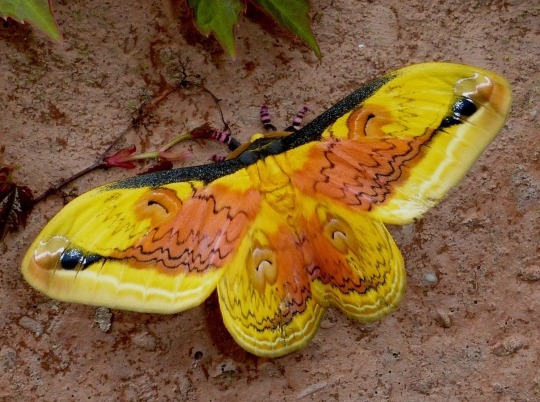
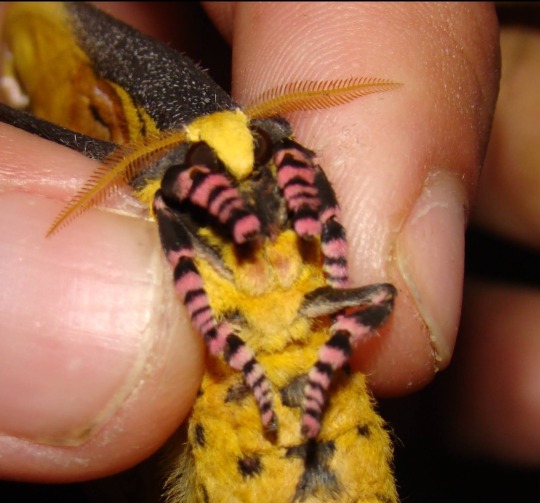
Oooh! I’m not sure what she is either but she’s so pretty!! Anyone else know?
#Beau bug talks#thank you!!#insects#entomology#bugs#bug#nature#bugblr#lepidopterology#lepidoptera#moth#moths
112 notes
·
View notes
Text
In the Willamette Valley of Oregon, the long study of a butterfly once thought extinct has led to a chain reaction of conservation in a long-cultivated region.
The conservation work, along with helping other species, has been so successful that the Fender’s blue butterfly is slated to be downlisted from Endangered to Threatened on the Endangered Species List—only the second time an insect has made such a recovery.
[Note: "the second time" is as of the article publication in November 2022.]
To live out its nectar-drinking existence in the upland prairie ecosystem in northwest Oregon, Fender’s blue relies on the help of other species, including humans, but also ants, and a particular species of lupine.
After Fender’s blue was rediscovered in the 1980s, 50 years after being declared extinct, scientists realized that the net had to be cast wide to ensure its continued survival; work which is now restoring these upland ecosystems to their pre-colonial state, welcoming indigenous knowledge back onto the land, and spreading the Kincaid lupine around the Willamette Valley.
First collected in 1929 [more like "first formally documented by Western scientists"], Fender’s blue disappeared for decades. By the time it was rediscovered only 3,400 or so were estimated to exist, while much of the Willamette Valley that was its home had been turned over to farming on the lowland prairie, and grazing on the slopes and buttes.
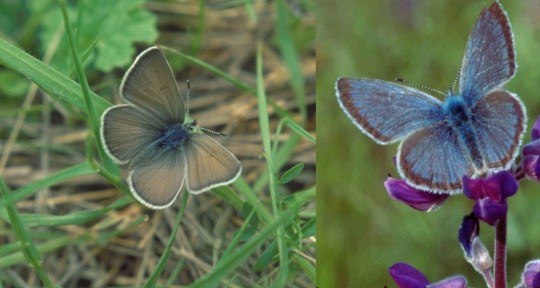
Pictured: Female and male Fender’s blue butterflies.
Now its numbers have quadrupled, largely due to a recovery plan enacted by the Fish and Wildlife Service that targeted the revival at scale of Kincaid’s lupine, a perennial flower of equal rarity. Grown en-masse by inmates of correctional facility programs that teach green-thumb skills for when they rejoin society, these finicky flowers have also exploded in numbers.
[Note: Okay, I looked it up, and this is NOT a new kind of shitty greenwashing prison labor. This is in partnership with the Sustainability in Prisons Project, which honestly sounds like pretty good/genuine organization/program to me. These programs specifically offer incarcerated people college credits and professional training/certifications, and many of the courses are written and/or taught by incarcerated individuals, in addition to the substantial mental health benefits (see x, x, x) associated with contact with nature.]
The lupines needed the kind of upland prairie that’s now hard to find in the valley where they once flourished because of the native Kalapuya people’s regular cultural burning of the meadows.
While it sounds counterintuitive to burn a meadow to increase numbers of flowers and butterflies, grasses and forbs [a.k.a. herbs] become too dense in the absence of such disturbances, while their fine soil building eventually creates ideal terrain for woody shrubs, trees, and thus the end of the grassland altogether.
Fender’s blue caterpillars produce a little bit of nectar, which nearby ants eat. This has led over evolutionary time to a co-dependent relationship, where the ants actively protect the caterpillars. High grasses and woody shrubs however prevent the ants from finding the caterpillars, who are then preyed on by other insects.
Now the Confederated Tribes of Grand Ronde are being welcomed back onto these prairie landscapes to apply their [traditional burning practices], after the FWS discovered that actively managing the grasslands by removing invasive species and keeping the grass short allowed the lupines to flourish.
By restoring the lupines with sweat and fire, the butterflies have returned. There are now more than 10,000 found on the buttes of the Willamette Valley."
-via Good News Network, November 28, 2022
#butterflies#butterfly#endangered species#conservation#ecosystem restoration#ecosystem#ecology#environment#older news but still v relevant!#fire#fire ecology#indigenous#traditional knowledge#indigenous knowledge#lupine#wild flowers#plants#botany#lepidoptera#lepidopterology#entomology#insects#good news#hope
4K notes
·
View notes
Text
Moth Of The Day #222
Madagascan Sunset Moth
Chrysiridia rhipheus
From the uraniidae family. They have a wingspan of 7-11 cm. They inhabit a wide variety of habitatsd, from deciduous forests to rain forest regions. They are endemic to Masagascar.
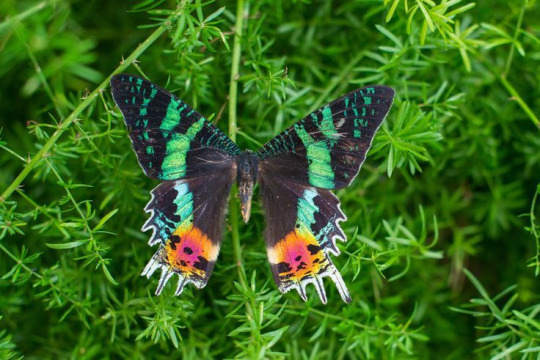

Image sources: [1] [2]
#moth#moths#lepidopterology#lepidoptera#nature#pretty moth#insect#bugs#moth of the day#motd#lepidoptery#bugblr#entomology#beautiful moth#colorful moth#madagascan sunset moth#chrysiridia rhipheus#uraniidae#uraniidae moth#bug#insects
3K notes
·
View notes
Text
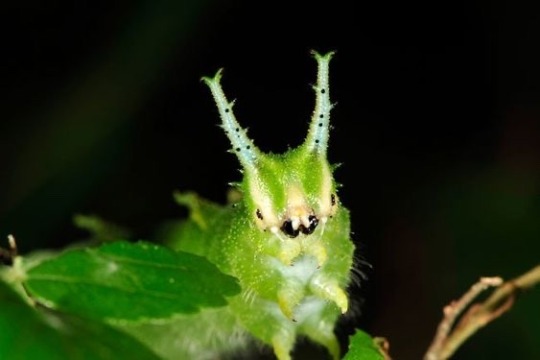

japanese emperor caterpillars are literally :3
1K notes
·
View notes
Text
BUG OF THE DAY
BotD 12 - 04/02/24
It's not tomorrow yet!!
This is the Southern African Slug moth!

These gorgeous insects are a prime example of why you shouldn't touch strangers. Coming into contact with the larvae of these fascinating moths can leave you with sharp, brittle spikes in your skin that administer a poison that causes itchy welts all over your skin. But besides the horrors, they really are quite lovely! These moths can be found across Mozambique, South Africa, Tanzania and Zimbabwe, and usually show up in Spring, though they tend to flourish in mid-summer. These insects don't have much information about them, but their colors speak volumes!

#BotD#bug of the day#entomology#bugs#bug#bugblr#bugposting#insect#insects#moth#moths#lepidoptera#lepidopterology#world's smallest gay man
643 notes
·
View notes
Text

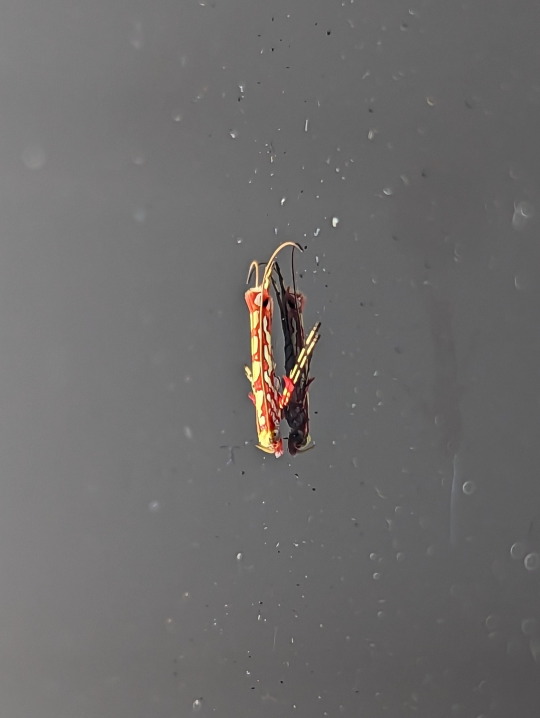
Beautiful Macarostola moth found on the glass window of a Kmart.
24/11/23 - Macarostola sp.
QLD:WET
#invertblr#invertebrates#bugs#bugblr#bugs tw#bug#insects#insecta#insects tw#insectblr#insect#entomology#Arthropods#Arthropoda#Macarostola#Gracillariidae#Leaf Blotch Miner Moths#Lepidoptera#lepidopterology#moths#mothblr#moth#mothcore#moths tw#unidentified
780 notes
·
View notes
Text

Beautiful promethea moth I managed to untangle some cobwebs from last night :) she stuck around where I put her for a while to rest and recover, and was sent on her way just now! At first I mistook her for a cecropia, but after a little more digging (and the help of some sunlight) I found that she more closely resembles a promethea :D I love her and I hope she enjoys the rest of her little buggy life <3
#shes so pretty!!!#my sister called me out to see her last night after dnd#shes afraid of most forms of bugs and the little lady was chilling on the door#so she didnt want her to fly into the house#when I went to relocate her I noticed some webbing on her leg and very carefully removed it#my sister noticed she was still on the window I put her on and I went out to check on her#i got to watch her regain her strength and fly off into the sky :D#bug#bugblr#insects#entomology#lepidopterology#moths#silk moths#promethea moth#Callosamia promethea#bugs my beloved <3
693 notes
·
View notes
Text
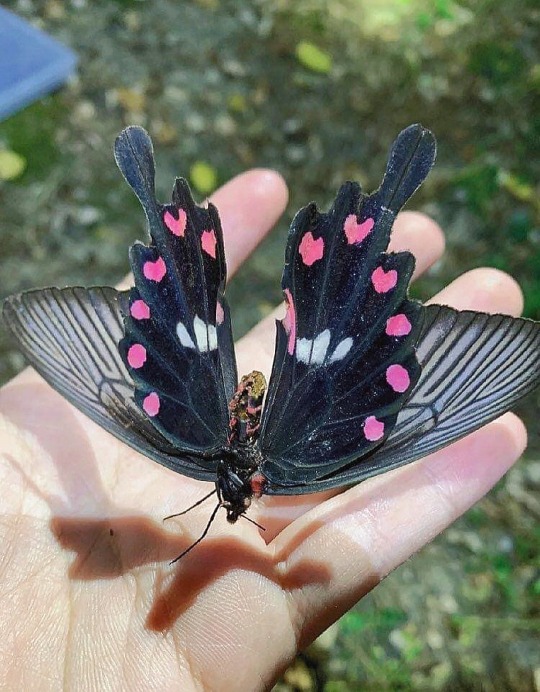
His wings have little hearts Ahhhhhh🥺
#butterfly#lepidopterology#fairycore#mothcore#etheral#fairy aesthetic#photography#cottagecore#naturism#naturecore#faecore#goblincore
529 notes
·
View notes
Text

Moths. Because moths; they're flying kittens that pollinate at night. And also it is SO close to being moth trap weather here. Thank u that is all for now from the Moth Promotional Board. 🦋🐈💖
#moth#lepidoptera#insect#moths#moth promotional board#nature#insects#sciart#drawing#entomology#bugblr#bug#bugs#caterpillar#lepidopterology#cw insects
71 notes
·
View notes
Text

Just a little moth... No bad intentions at all.
#welcome home#frank frankly#insects#bugs#Welcome home au#welcome home lepidoptera au#lepidoptera#lepidopterology#lepidoptera au#Moth frank frankly#My art
110 notes
·
View notes
Text
So...I was walking down the back alleyway close to my work this morning when I happened to see something clinging to the brick wall behind a small strip mall, and when I got close enough to see what it was, my very first thought was,
“What the FUCK is THAT?”
Since I have no cell phone, I had to run into work, borrow a co-workers phone and run back in order to take a picture of it.
Look. LOOK AT IT.
That’s a whole-ass Pokemon! (Volcarona...)

Never in the forty years I have been alive and living in Ontario, Canada have I either seen or even know we had Moths this huge!
It’s wingspan was a bit wider than the span of my hand between my thumb and little finger (and that’s seven and a half inches as it is!)
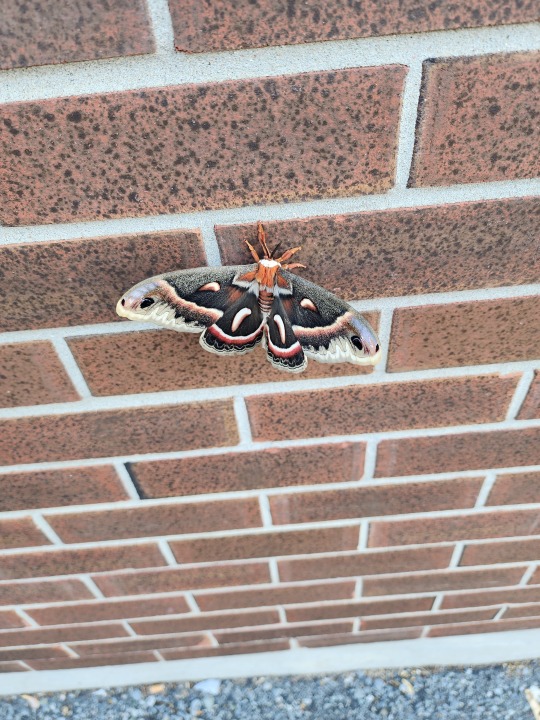
One quick internet search later, and I can say with certainty that it was a Cecropia Moth, the largest native Moth species in North America!
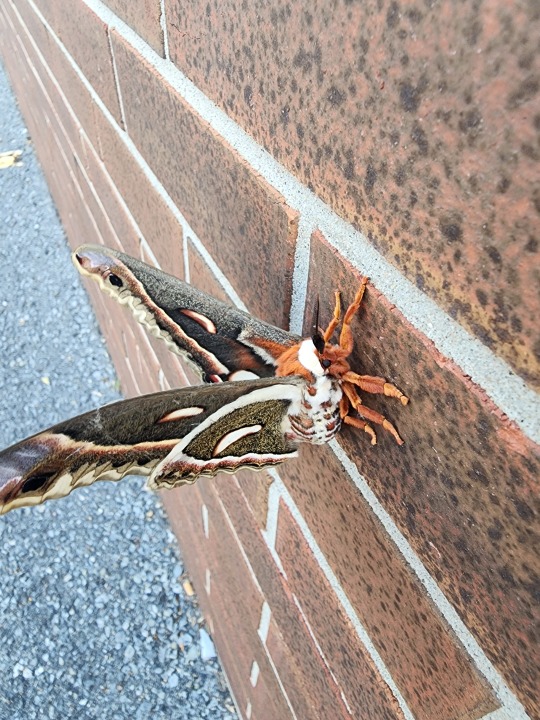
Look at it...look at it’s FLUFFINESS! 😆
It was gently fanning it’s wings when I left, and I hope it found a better hiding spot than conspicuously clinging to a brick wall...
362 notes
·
View notes
Text
Lovely white-lined Sphinx moth. 💖
#beaus bug biome#insects#entomology#bugs#insect#bug#nature#bugblr#lepidopterology#lepidoptera#moth#moths#white lined sphinx#white lined sphinx moth
2K notes
·
View notes
Text


purple owl & blue morpho butterflies
#cottagecore#cottage aesthetic#meadowcore#farmcore#grandmacore#nature#flowercore#aesthetic#naturecore#fairycore#flowers#butterflies#moth#lepidopterology#lepidoptera#butterfly#garden#butterfly garden
761 notes
·
View notes
Text
Moth Of The Day #212
Lily Moth / Indian Lily Moth
Polytela gloriosae
From the noctuidae family. They have a wingspan of about 29 mm. They are found in Sri Lanka and possibly Indonesia.
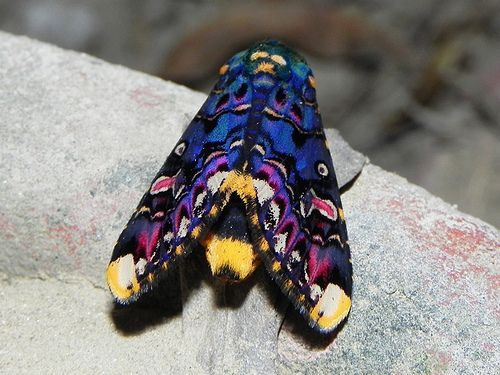
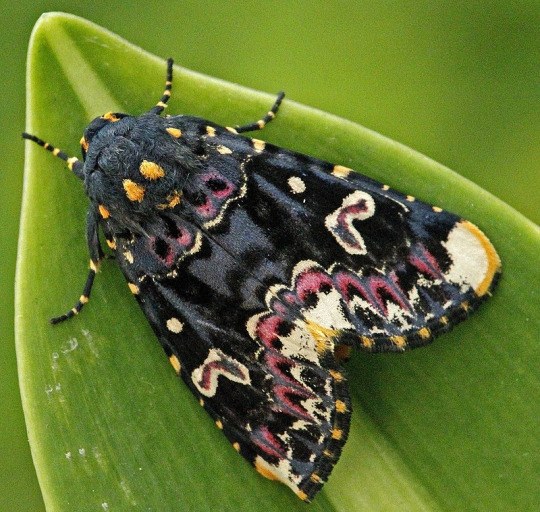
Image sources: [1] [2]
#moth#moths#lepidopterology#lepidoptera#nature#pretty moth#insect#bugs#moth of the day#motd#lepidoptery#entomology#bug#insects#invertebrates#noctuidae#noctuidae moth#lily moth#indian lily moth#lily caterpillar#polytela gloriosae
3K notes
·
View notes
Text
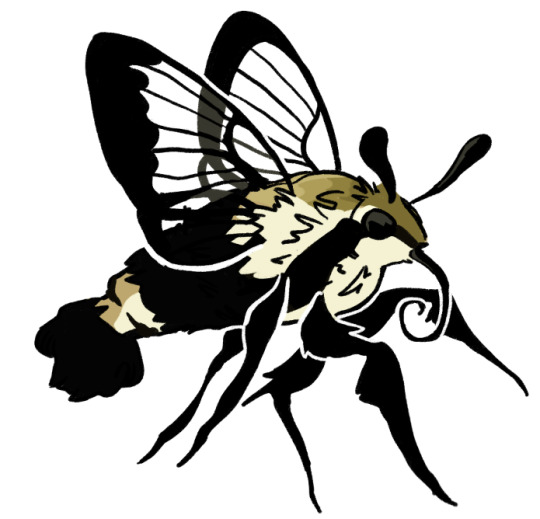
clearwings are probably my favorite moth tbh. peak animal
#bugs#lepidoptera#lepidopterology#bugblr#mothblr#moth#clearwing moth#my art#extravagances#digital art#havent drawn a beast in a while:heart:
87 notes
·
View notes
Text
BUG OF THE DAY
BotD 6 - 03/27/24
Am I late this time? No way!!!
This is the Gaudy Sphinx Moth!

These fluttery fellas are anything but gaudy, bearing beautiful emerald coloring. As with most Hawkmoths, these moths have a splash of red lining their underwings. That, along with their sharp, angular wings make these moths an absolutely stunning species! These moths can usually be found in North, Central, and South America, but commonly fly long distances, and can occasionally be found in strange places. The larvae of this species have distinct eyespots, meant to resemble that of snake eyes. Their disproportionately large, shiny "eyes" make them look almost like a Pokémon in their larval state. Truly an amazing creature!
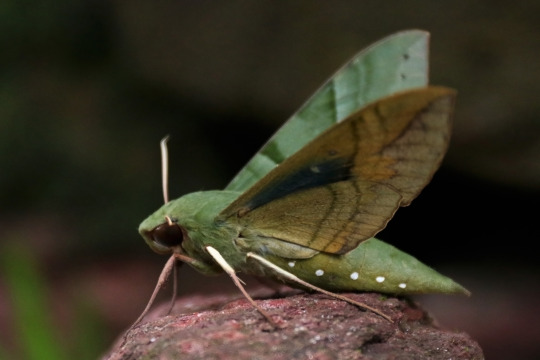
#BotD#bug of the day#entomology#bugs#bug#bugblr#bugposting#insect#insects#moth#moths#lepidoptera#lepidopterology
610 notes
·
View notes